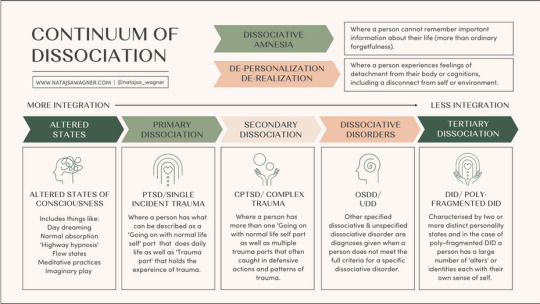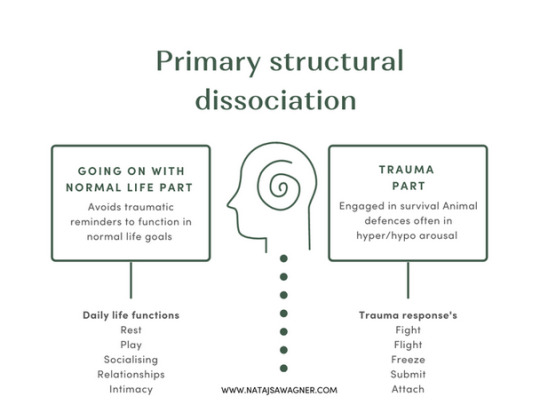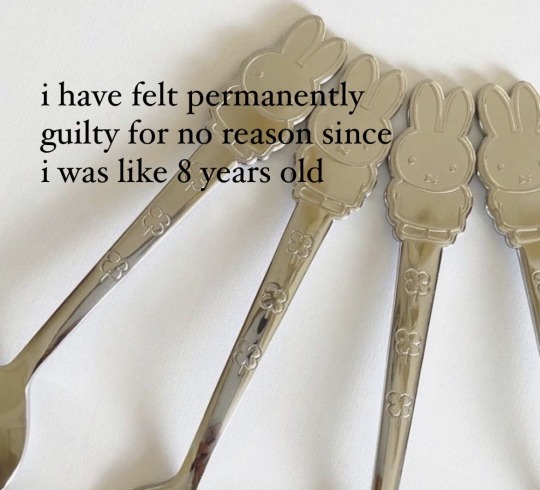Text
My life was supposed to end at 16
Idk what im doing now
2K notes
·
View notes
Text
If you think childhood trauma is easy to get past, wait a few generations.
4 notes
·
View notes
Text
Today I learned more about neuroplasticity. You know how some people like to say that your parents can't change? That people past their 20's are incapable of meaningful growth?
Well they're wrong! We used to think that the brain stopped making new pathways in our youth, but we were wrong! The brains ability to do so never stops!
I'm personally overjoyed to hear this. Our Mother is in her 60's and we had been told numerous times that she couldn't change because of being too old.
This article gives some lovely tips to grow new grey matter and kill off trauma grown pathways (that means less anxiety/panic attacks getting triggered) in lue of new healthier ones.
If you're like me, information like this is gold. Cause we really just want to be better and have a normal life :) If you like this article, I'd recommend looking at others on this site.
Happy healing :p
19 notes
·
View notes
Text
The Continuum of Dissociation

[Image description:
An infographic describing the continuum of dissociation and the theory of structural dissociation. From left to right (more integrated parts to less integrated parts), are:
Altered states - Altered states of consciousness: Includes things like daydreaming, normal absorption, 'highway hypnosis', flow states, meditative practices, and imaginary play
Primary dissociation - PTSD / single incident trauma: Where a person has what can be described as a 'Going on with normal life' part that does daily life, as well as a 'Trauma part' that holds the experience of trauma
Secondary dissociation - C-PTSD / complex trauma: Where a person has more than one 'Going on with normal life' part as well as multiple trauma parts that often are caught in defensive actions and patterns of trauma
Dissociative disorders - OSDD / UDD: Other specified and unspecified dissociative disorders are diagnoses given when a person does not meet the full criteria for a specific dissociative disorder
Tertiary dissociation - DID / polyfragmented DID: Characterised by two or more distinct personality states, and in the case of polyfragmented DID, a person has a large number of 'alters' or identities, each with their own sense of self
Outside of the parts model, but still within dissociation, are:
Dissociative amnesia: Where a person cannot remember important information about their life (more than ordinary forgetfulness)
Depersonalisation & derealisation: Where a person experiences feelings of detachment from their body or cognitions, including a disconnect from their self or environment
End image description]

[Image description:
An infographic describing primary structural dissociation.
In primary structural dissociation, there is a 'Going on with normal life part', which avoids traumatic reminders to function in normal life goals. Daily life functions include rest, play, socialising, relationships, and intimacy.
There is also a trauma part, which is engaged in survival / animal defences and is often in hyper- or hypoarousal. Trauma responses (defences) are: fight, flight, freeze, submit, and attach.
End image description]

[Image description:
An infographic describing secondary structural dissociation.
In secondary structural dissociation, there is a 'Going on with normal life part', which avoids traumatic reminders to function in normal life goals.
There are also multiple trauma parts, which are engaged in survival / animal defences and is often in hyper- or hypoarousal. Trauma responses (defences) are: fight, flight, freeze, submit, and attach.
End image description]

[Image description:
An infographic describing tertiary structural dissociation. It gives an example of a system, the collection of all alters (parts) within a person.
In tertiary structural dissociation, there are multiple 'Going on with normal life parts', one or more of which may be called the 'host(s)', who are engaged in daily life. Examples of going on with normal life parts are a worker alter, a caregiver alter, and a partner alter.
There are also multiple trauma parts, which are alters engaged in survival defences. Examples of trauma parts are a gatekeeper alter (who decides who fronts), fight alters (e.g. Ann, a 24 year old primar protector part, and Don, a 30 year old persecutor part), flight alters (e.g. Sally, an 8 year old trauma holder), freeze alters (e.g. Marcus, a 10 year old trauma holder), submit alters (e.g. Pia, an 18 year old trauma holder), and attach alters (may be called 'littles', e.g. Lily, a 4 year old and Jack, a 6 year old, both trauma holders).
End image description]
- Natasja Wagner
91 notes
·
View notes
Text


Ruth Awad, from “Let me be a lamb in a world that wants my lion”
29K notes
·
View notes
Text
who else mourning the person they could've been if they were treated kindly as a child
20K notes
·
View notes














